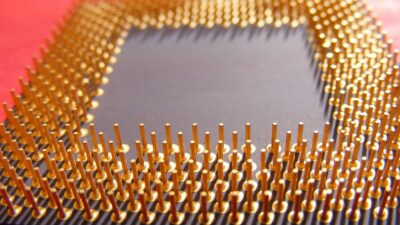The global semiconductor shortage has created waves of disruption across industries, from automotive to consumer electronics. In this landscape of scarcity, Intel Corporation, a long-standing leader in semiconductor manufacturing, is reinventing its strategy to not only endure the crisis but also to emerge stronger.
Understanding the Semiconductor Shortage
The semiconductor shortage is the result of a perfect storm. It started as a consequence of the COVID-19 pandemic, which disrupted manufacturing and transportation. The sudden surge in demand for electronics—driven by remote work, online education, and an accelerated shift to digital solutions—added fuel to the fire. Compounding these issues, geopolitical tensions and supply chain vulnerabilities have made it even more challenging to meet the escalating demand for chips.
Intel’s Strategic Response
1. Increased Investment in Manufacturing Capacity
Recognizing the urgency of the situation, Intel has committed to a multi-billion dollar investment plan aimed at expanding its manufacturing capabilities. The company announced plans to build new fabrication plants, or fabs, in the United States, a move that aligns with President Biden’s push for domestic semiconductor production. By boosting capacity, Intel aims to mitigate both current shortages and future risks, positioning itself as a reliable supplier in a tightly constrained market.
2. Revamping Product Roadmaps
Intel has revisited its product roadmaps to align more closely with market needs. The company is focusing on high-demand sectors, including data centers, AI, and the burgeoning Internet of Things (IoT). Additionally, the introduction of advanced process nodes and new architectures aims to improve performance while reducing power consumption—a critical factor as industries look for more sustainable solutions.
3. Partnerships and Collaborations
Faced with a rapidly changing landscape, Intel is keenly aware that collaboration can yield significant benefits. The company has ramped up partnerships with automakers, cloud service providers, and other tech companies to ensure mutual support in weathering the semiconductor storm. Such collaborations allow for better forecasting of demand and more streamlined supply chains, effectively addressing shortages before they become critical.
4. Diversifying Supply Chains
To counter the vulnerabilities identified during the shortage, Intel is diversifying its supply chains. This includes sourcing materials from a broader range of suppliers and investing in local manufacturing capabilities. By reducing reliance on a handful of suppliers or regions, Intel ensures a more resilient supply chain capable of weathering disruptions.
5. Focus on Research and Development
Intel remains committed to R&D, viewing it as a key element in sustaining its competitive edge. The company continuously invests in the next generation of semiconductor technology, including 3D chip designs and advanced packaging techniques. This focus not only enhances performance but also fosters innovation that could redefine industry standards.
Future Outlook
While navigating the semiconductor shortage is a pressing challenge, it also presents unique opportunities for Intel. By amplifying its manufacturing footprint, fostering strategic partnerships, and focusing on next-gen technologies, Intel aims to reclaim its leadership position in an increasingly competitive landscape.
Additionally, Intel’s willingness to adapt to changing conditions—whether it be through enhancing supply chains, investing in new facilities, or collaborating with other tech giants—illustrates a comprehensive, forward-thinking strategy that may serve as a blueprint for other companies navigating similar challenges.
In conclusion, Intel is not just waiting for the semiconductor shortage to resolve; it is actively taking steps to reshape its future in the semiconductor world. With a robust strategy rooted in investment, innovation, and collaboration, Intel is poised to not just survive the current crisis but thrive in the rapidly evolving tech landscape. The coming years will be pivotal for the company, and its actions will likely serve as a case study for how to strategically navigate through adversity.



